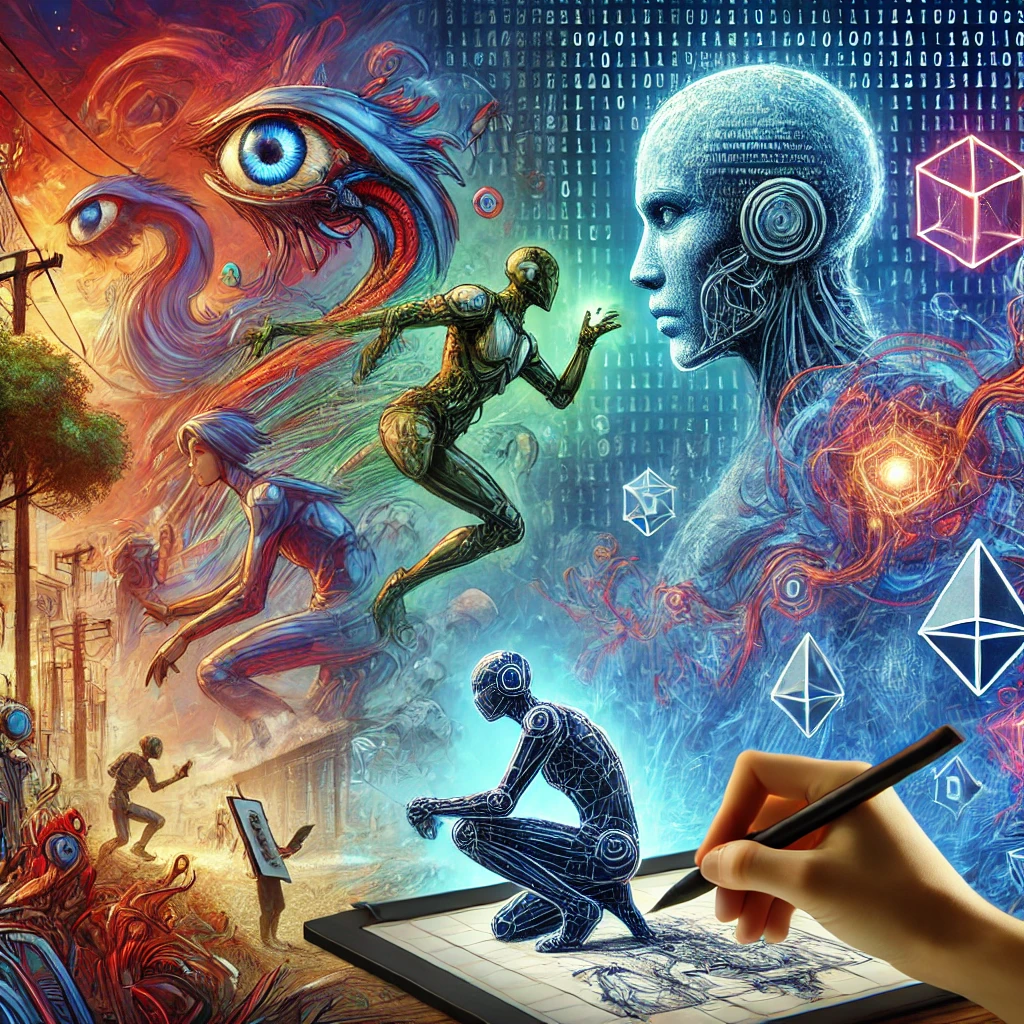
Since ChatGPT launched in November 2022, the internet has been awash with various AI-generated content. Although various platforms and bodies have made efforts to regulate the growing use of generative AI, its impact has continued to grow across several industries.
In the gaming industry, generative AI has been warmly welcomed as an innovative tool to increase the gaming experience of many players. In this vein, generative AI has become instrumental in the recent artistic designs of various games. From the visual appeal to the sounds and even the gameplay, there are no limits to the potential influence of generative AI.
In this piece, we’ll discuss the unique role of generative AI in the design of games, and its primary applications. This piece also highlights the different perspectives of its pros and cons.
Why the use of generative AI in game design and art?
Before 2022, online gaming platforms were doing pretty well with innovative games, bonuses and other side attractions. By partnering with top game providers in the industry, these platforms were able to provide players with an immersive gaming experience that feels like a virtual journey of unusual art. Since it appears that the industry is doing quite well, some have questioned the need for generative AI.
On one hand, some people argue that generative AI may deprive original game developers of their creativity. On the other hand, there are those who refute these arguments, claiming that the pros of generative AI outweigh these concerns. The many pros of generative AI include:
Time saving
Generative AI is like a simple machine that minimizes effort and maximizes productivity. AI models can produce automated content that drastically reduces the design process. With generative AI, developers can skip tedious research and data collection processes by instructing the AI models to produce the necessary information. Since generative AI can produce a truckload of information within seconds, developers are able to focus on other essential aspects of the game. The trickle-down effect of time-saving processes is the reduced cost of production.
Improved gameplay and performance
The goal of every game developer is to create games that provide players with a quality gaming experience. This way, they will visit the gaming platform frequently and spend more time playing their favorite games. Thanks to generative AI, developers can create enhanced games with intriguing mechanics that will attract more players.
Generative AI can also be automated to ensure that gaming platforms and devices function optimally. By detecting and fixing technical hitches, players will have a seamless gaming experience. This contributes to a player’s gaming experience.
Customized gaming options
Now, more than ever, gamers want a platform that fully serves them. In other words, they demand a personalized platform with customization features. With the help of generative AI models, gaming platforms can automate a gaming library that suits a player’s preferences. With this, the AI model detects the players’ gaming behavior and patterns, and presents them with their preferred games without any further input. This will increase the platform’s player retention and patronage.
Enhanced creativity
Contrary to the popular opinion that AI will replace developers or limit their creativity, it has offered developers an opportunity to test and express their creativity. Since generative AI can reduce the challenging process of ideation, developers are able to direct their creative juices to various gaming aspects. This will lead to the creation of more innovative games, which will further increase the growth of the gaming industry.
Applications of generative AI in game art and design
The numerous benefits of generative AI may seem more theoretical than practical to a few critics because of its novelty. However, there are already specific applications of generative AI in the design of various games. These applications include:
Content creation
Every game has a unique storyline, which determines its characters and overall gameplay. With generative AI, gaming content and design can be determined by algorithms. This process is called procedural content generation (PCG). With PCG, the manual process of learning the player patterns of current games will be substituted by algorithms that can deduce gaming patterns and the most appropriate art and design for gaming content.
Object and character design
Having identified the content of a game, the next thing to identify are its characters and the gaming objects. Before generative AI, developers had to carry out repetitive tasks to design the “perfect” characters and objects of a game. Now, with AI, the tasks are less repetitive. By programming the AI model to design unique characters and objects, developers can produce a range of aesthetically pleasing designs within a short time. These AI models can be programmed to ensure that every detail of these designs is artistically included in the theme of the game. Details such as the color, text and size of the characters and objects can be configured within minutes. This drastically reduces the time and effort that developers have to spend on such details.
Sound design
Since the day of Super Mario and early browser games, gaming sounds have been an important feature of a game’s design, from the background music to the subtle sounds of various motions and actions. The sound effects of a game are an indispensable feature of any games, and can be used in one of two ways, emotionally and functionally. Signalis is a great example of this, a game from two person development studio in Germany, which received great critcal praise for its clever use of soundscapes to elicited emotional reaction from the player.
To create the music and sound effects manually, developers had to collaborate with a host of partners. From getting legal representatives to ensure copyright protocols and finding musicians to create unique sounds for different games, developers spent a lot of time creating appropriate music and sound effects for different games. Now, with generative AI, developers can rapidly create new sounds and compositions that suit a game’s content and style.
Gaming mechanics
The mechanics of a game determine the overall game play. These include the game’s layout, gaming time and potential strategies. To create each of these features manually, developers spent a long time using trial and error methods to come up with a functional system. Any demand for a slight alteration to these mechanics would almost require that developers redo the entire design process.
An example of this can be seen at German casinos listed on CasinoTopsOnline (A transparency first gambling resource), because of changes to German legislation the ‘Auto-Play’ game mechanic had to be removed from all online casino games, which created an enormous amount of work in the back end of these platforms to create bespoke games for the Germen region.
With generative AI, developers could create adaptive gaming mechanics. This creates a mechanism that responds swiftly to the player’s preferences, actions or region and could save a huge amount of development time. This further creates a more engaging and personalized gaming experience.
Final thoughts
The growing popularity of generative AI in the gaming industry can be mostly credited to its advanced capabilities. With its knack for creating one-of-a-kind content, generative AI has influenced the artistic design of many games. With their ability to simplify and improve various elements of game development, generative AI models and tools are here to stay. With the current contribution of generative AI to the creation of content, music, characterization and mechanics of various games, players can expect a more individualized and engaging gaming experience.







